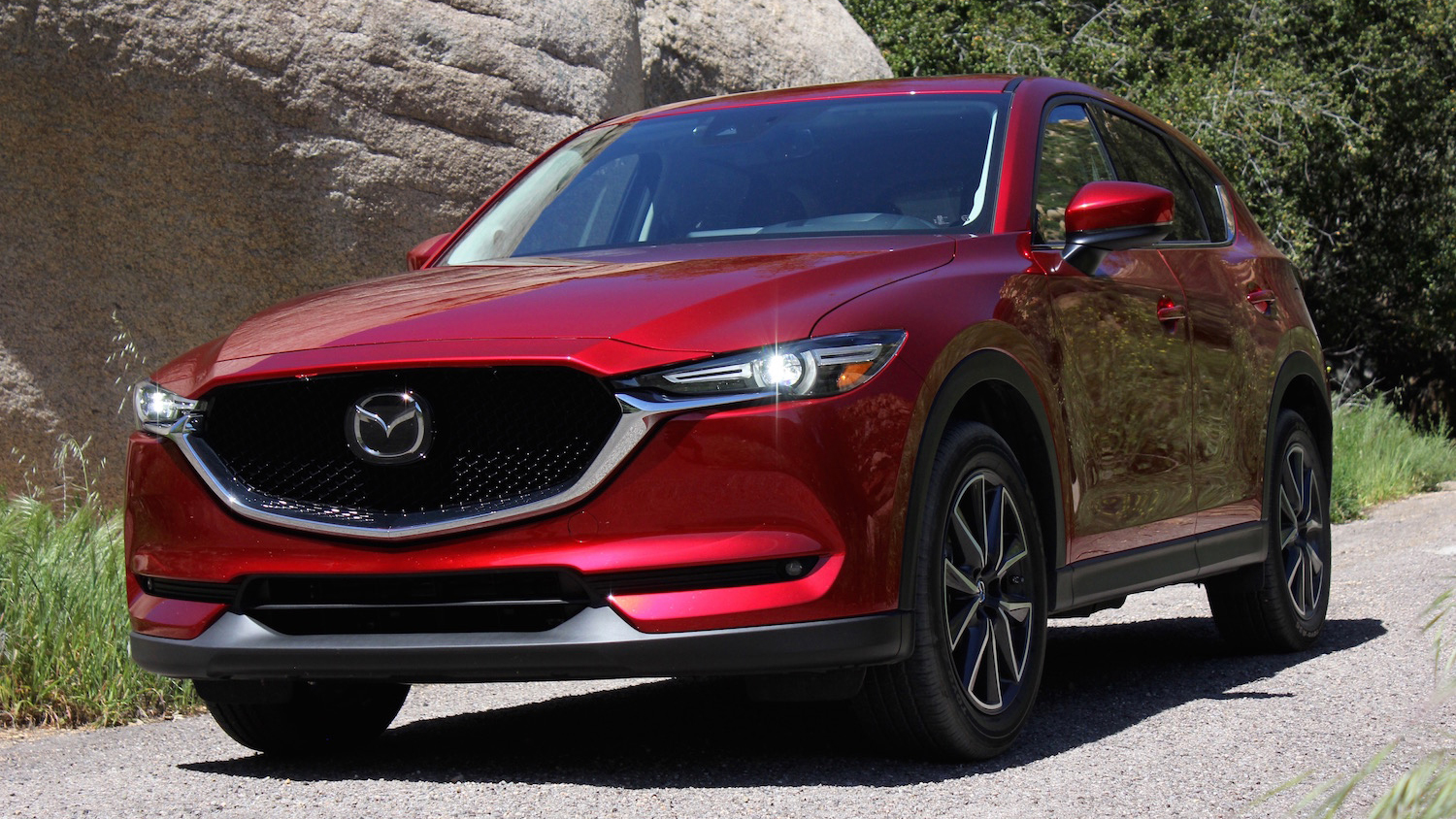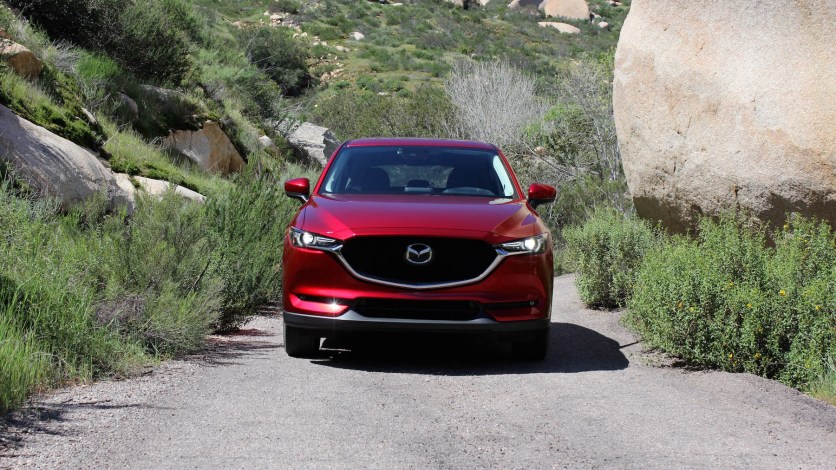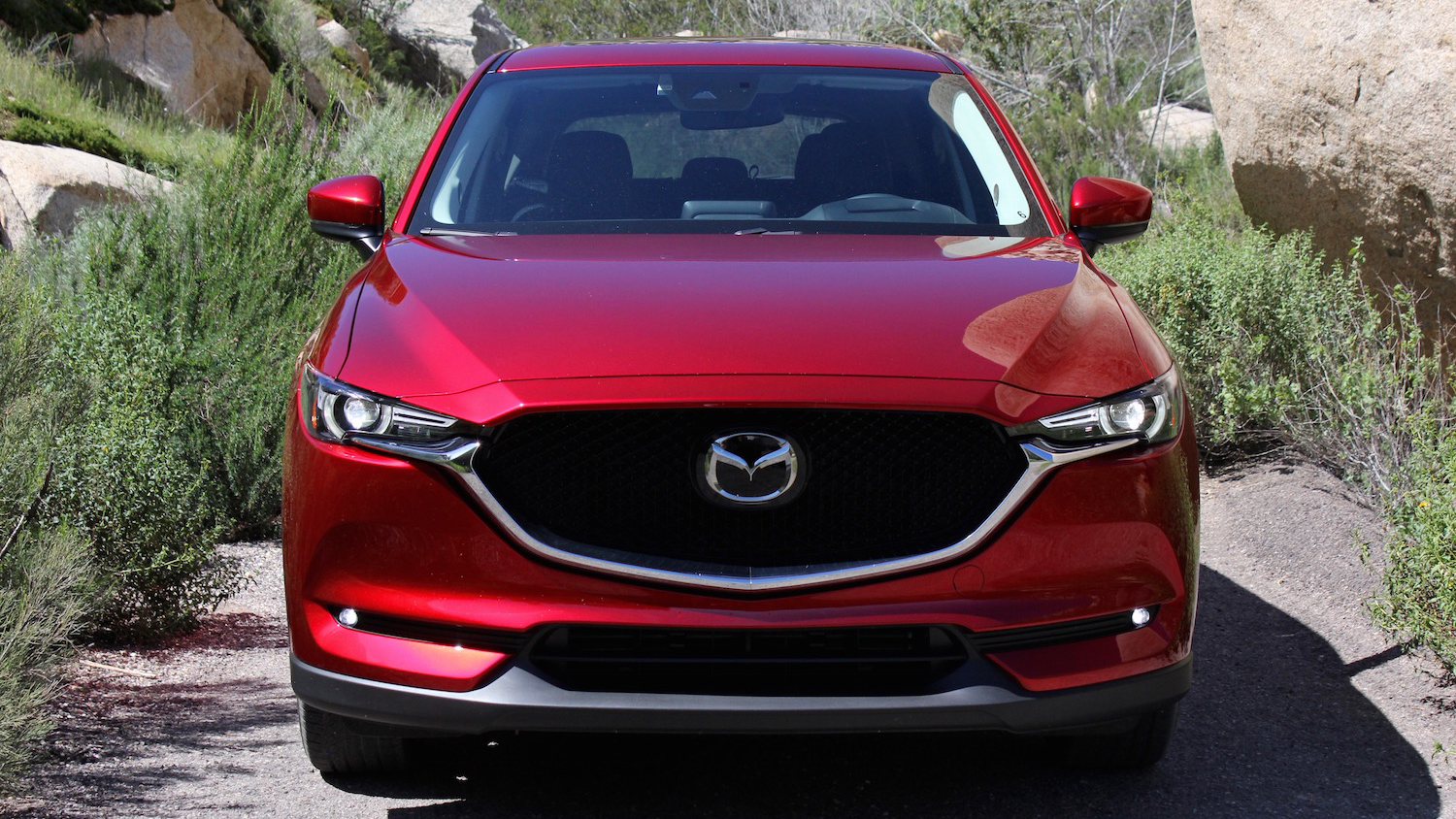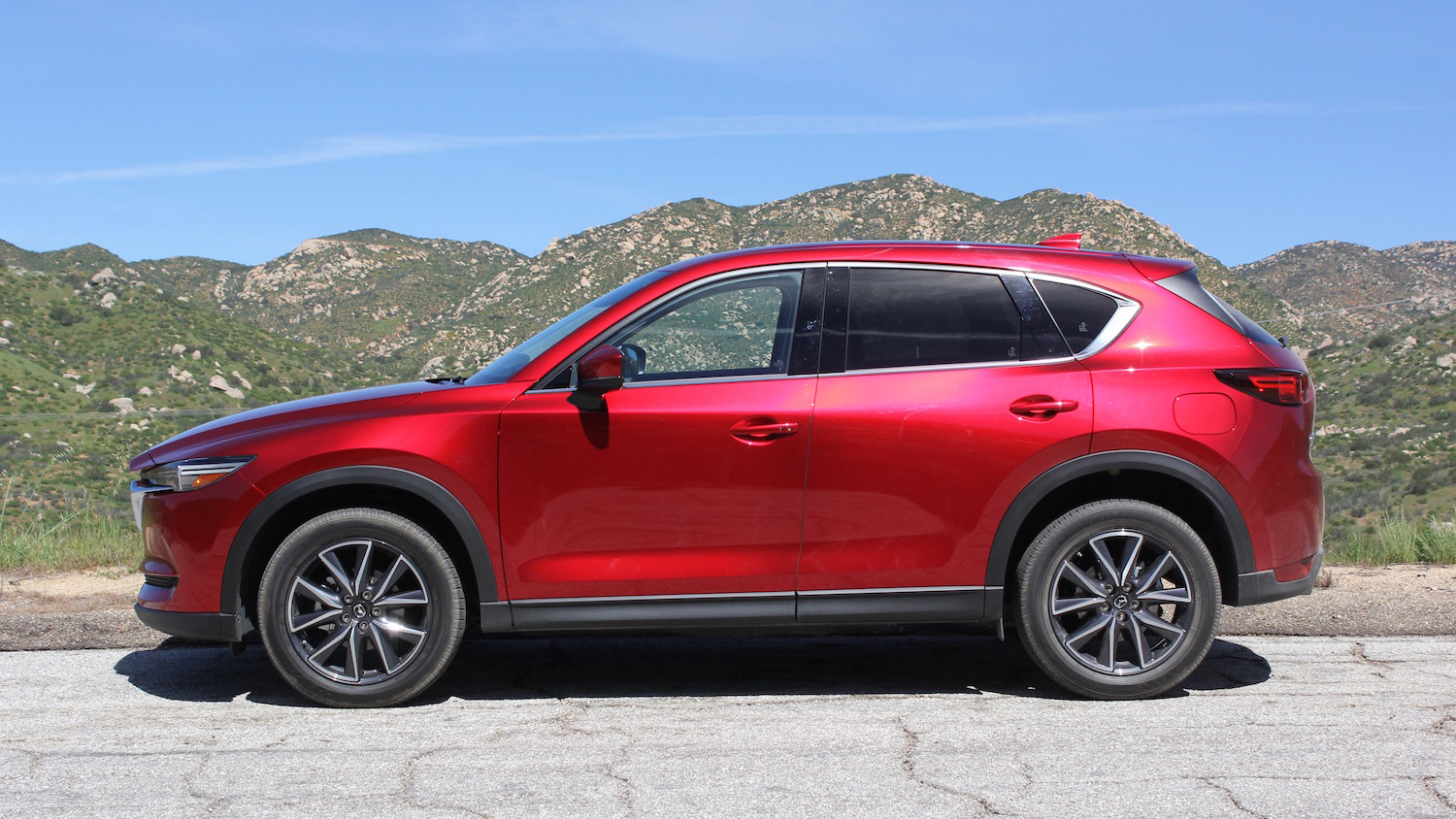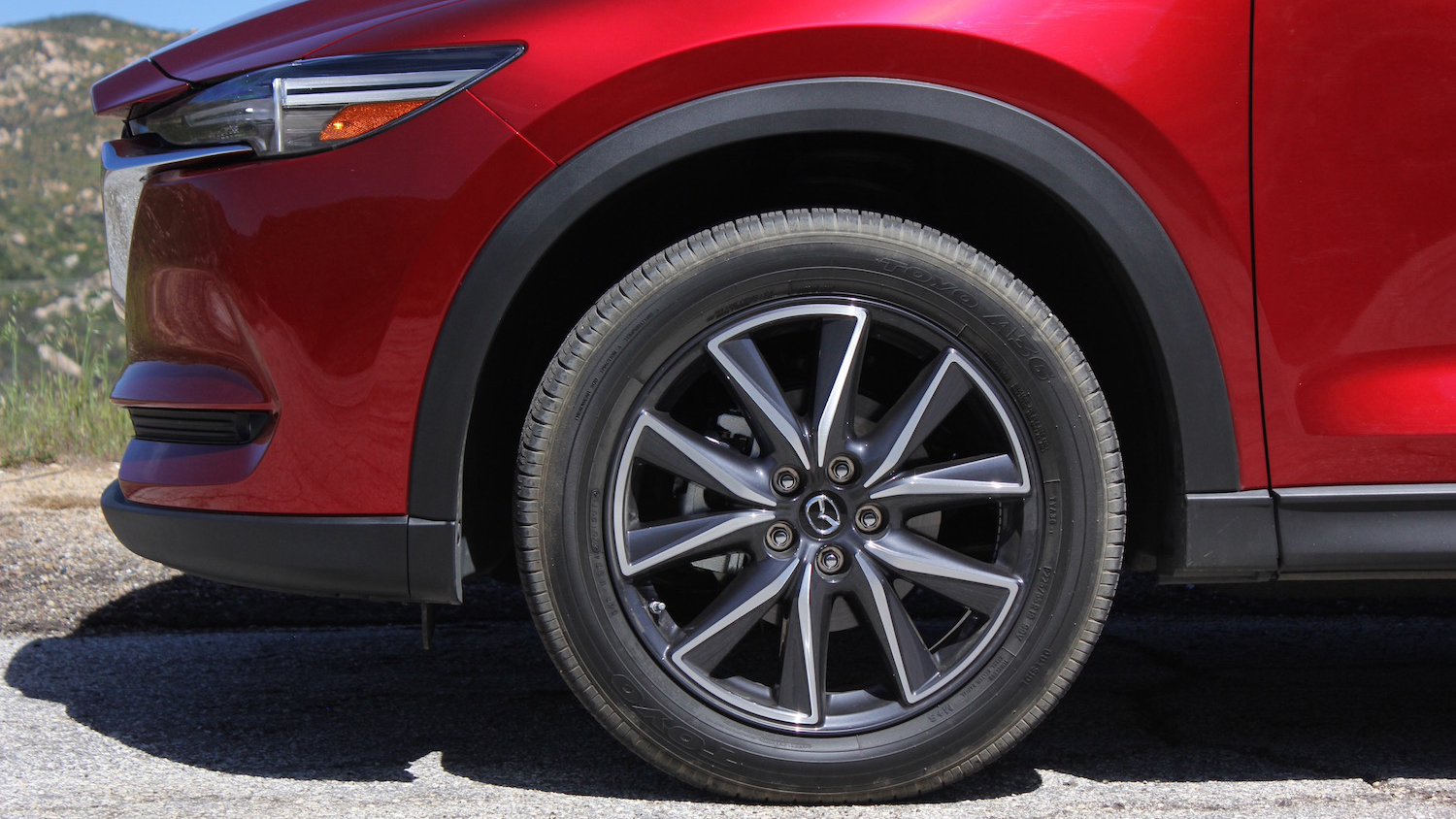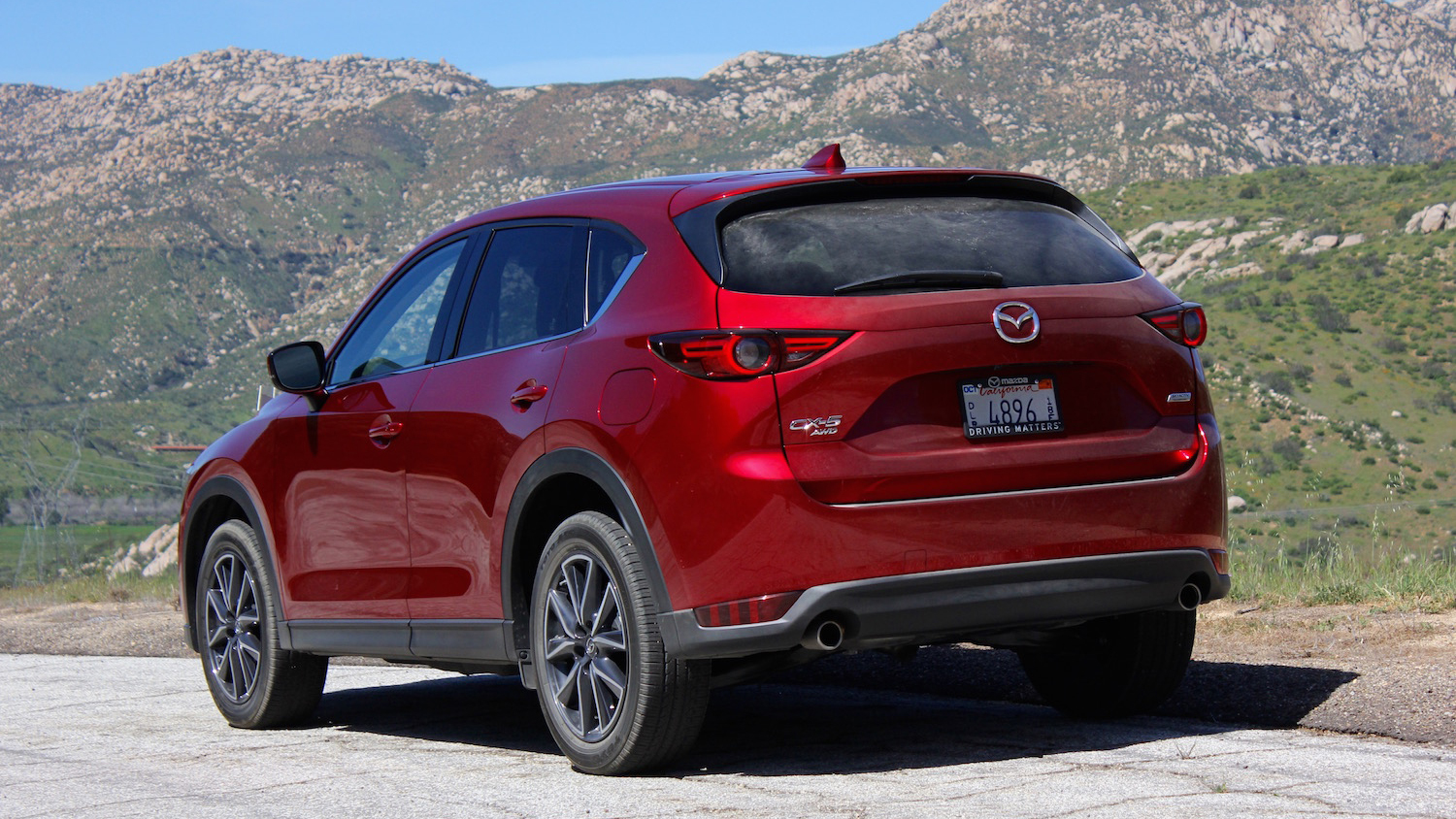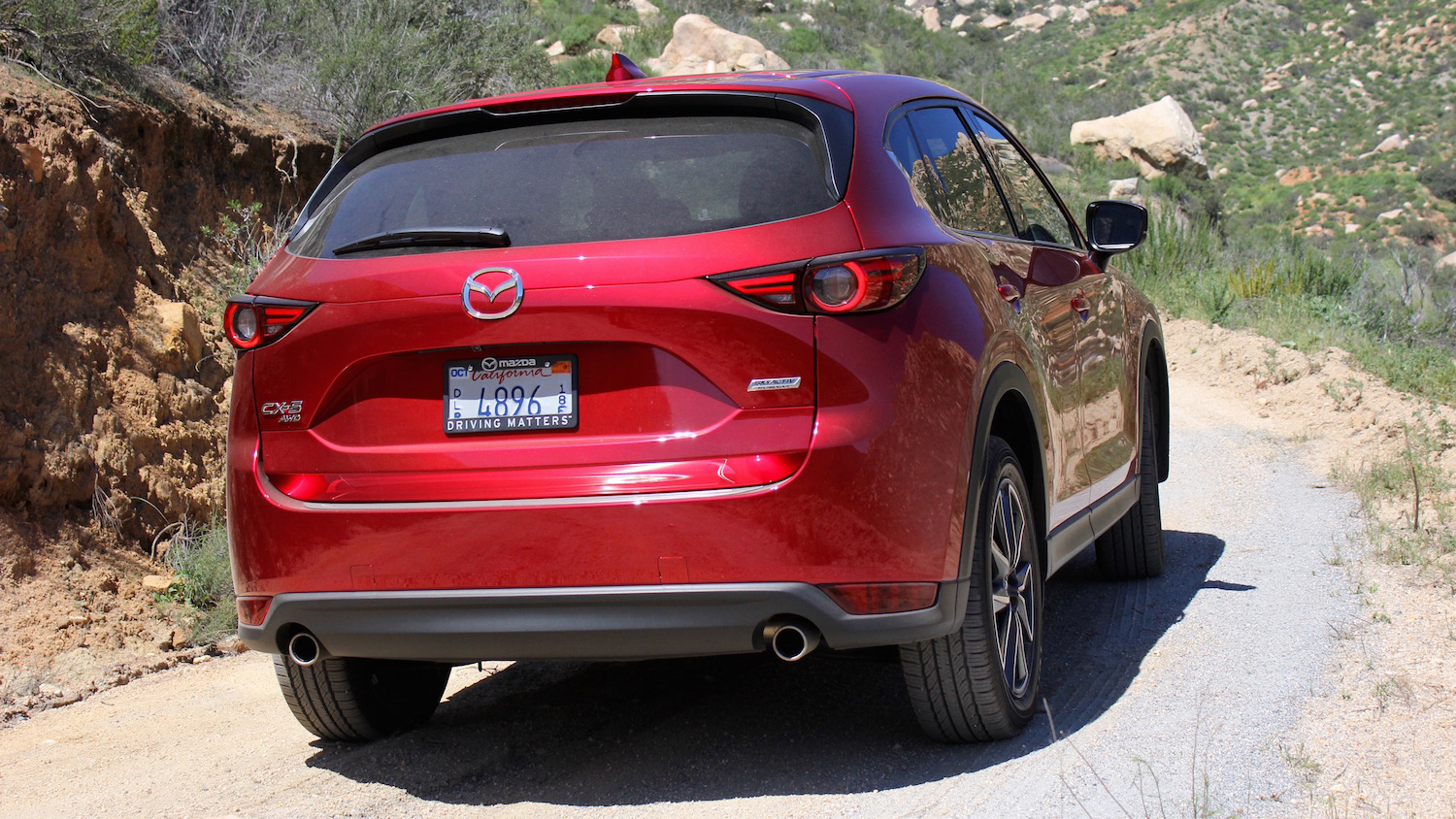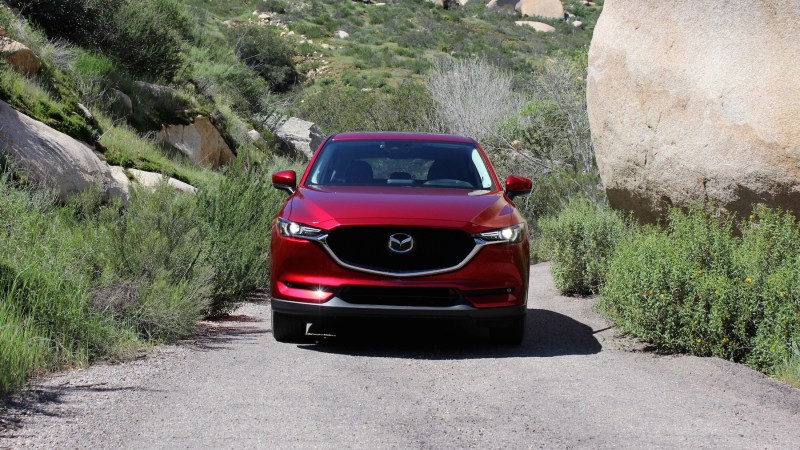
Vehicle Introduction & Overview
Five years ago, Mazda applied its curvaceous Kodo design language to its first compact crossover. The CX-5 arrived on the scene at a critical moment for the Japanese automaker. Crossover fever had begun spreading and consumers were on the lookout for distinguished offerings. Mazda’s zoom-zoom philosophy and handsome styling immediately stood out among more conservative vehicles.
The CX-5 is now Mazda’s best-selling model and therefore its best shot at stealing market share from larger rivals like Honda and Toyota. Mazda’s redesigned CX-5 arrives in dealerships later this month touting a number of enhancements. Evolutionary design tweaks, inspired by the larger CX-9 crossover, mean the CX-5 is more striking than ever. G-Vectoring Control, first introduced on the Mazda3 and Mazda6, translates to more fluid handling. A significantly quieter and more refined cabin is better aligned with entry-level luxury vehicles than mainstream autos.

Mazda hopes the sum of these updates will elevate the CX-5 from a niche, enthusiast alternative to a relevant, high-value model.
Trim Levels & Features
The 2017 Mazda CX-5 comes in three trims, with three additional packages. Entry-spec Sport models start at $24,045 and come standard with 17-inch alloy wheels, black cloth-upholstered seats, push-button ignition, LED headlights, variable intermittent windshield wipers, 40:20:40 split-folding rear seats, and Smart City Brake Support. On the tech side, a 7.0-inch touchscreen infotainment system with Mazda Connect software, and a wide-angle backup camera is included. Two USB ports and Bluetooth phone/audio are your only smartphone connectivity options.
At $25,915, the Touring grade adds a power driver’s seat, leatherette seating surfaces with suede inserts, Blind Spot Monitoring with Rear Cross-Traffic Alert, heated front seats, rear privacy glass, auto-leveling LED headlights, a six-speaker audio system, keyless entry, leather-wrapped steering wheel and shifter handle, rear HVAC vents, dual-zone climate control, two rear USB ports, and a reclining rear bench seat.
The Touring Preferred Equipment package bundles a BOSE® 10-speaker audio system, a power glass moonroof, power liftgate, navigation, auto-dimming mirrors with Homelink, and automatic headlights for $780. Mazda’s i-Activesense safety suite can also be tacked on for $625.
The range-topping Grand Touring trim ($29,395) introduces black or parchment leather seats, 19-inch alloy wheels, lumbar support, SiriusXM, rain-sensing wipers, heated exterior mirrors, adaptive headlights, LED fog lights, and LED tail lights. But wait, there’s more! The $1,830 premium package loads the CX-5 GT with a head-up display, traffic sign recognition, power front passenger seat, heated rear seats, a heated steering wheel, and windshield wiper de-icer.
These prices exclude a $940 destination fee. Front-wheel drive is standard, but all-wheel drive is available on all trims for $1,300 extra. Oh, and if you want that luscious Crystal Soul Red paint, budget another $595. Sure, it’s not the simplest pricing structure, but mid-grade packages allow customers to pay only for the features they want, creating value at every tier.
Whichever trim you choose, the CX-5 turns heads with an enticing design. Mazda credits its Japanese aesthetic for the crossover’s simple, elegant beauty. The new CX-5 is unequivocally the most attractive crossover in its segment and perhaps even the entry-lux category. Much of what makes the CX-9 so unique is further refined in the new CX-5’s lines, giving it broader appeal.
Technology Overview
The 2017 CX-5’s safety and convenience technology hit the high side of status quo, but the absence of Apple CarPlay and Android Auto continues to hurt Mazda’s lineup. The good news is that when these interfaces do reach production (and Mazda is working on it), they will be rolled out retroactively. In other words, if you currently drive a Mazda with the 7.0-inch infotainment system, you’ll get CarPlay the moment Mazda launches it. The bad news is that the automaker can’t say when the software will be ready. It could be a few months, or much longer.
Apart from CarPlay and Auto, available features like Bose premium audio, heated rear seats, two rear USB ports, a head-up display, and Mazda’s i-ActiveSense safety suite point to the crossover’s upscale attitude.
Interior Fit & Finish
Mazda’s new CX-5 not only borrows the CX-9’s exterior aesthetics; much of the bigger crossover’s interior refinement finds its way into the CX-5’s cabin. A horizontal dashboard layout affords a sense of width, brushed aluminum trim pieces on the steering wheel, air vents, and infotainment controls spice up the cockpit, and cross-stitching on the available leather seats, door panels, and dashboard are all premium plays.
The CX-5 easily accommodates five adults (though few would volunteer to take the middle seat for long journeys). Front passenger seats are exceedingly comfortable, if a bit under-bolstered, rear passenger leg and headroom is ample, and the two-position rear bench lets backseat riders relax. The CX-5 has a cargo capacity of 30.9 cubic feet with the rear seats in place, and 59.6 cu. ft. with the seats folded.
Most notably, Mazda has gone to great lengths to improve the 2017 CX-5’s NVH levels (noise, vibration, and harshness). As a result, the new CX-5 NVH’s is better than the Audi Q3, Honda CR-V, Jaguar F-Pace, Hyundai Tucson, and BMW X1. Passengers in the front or rear can conduct a conversation without raising their voices a single octave.
Driving Performance & MPG
Mazda’s SkyActiv engineering philosophy cuts every bit of inessential weight to improve fuel economy and enhance driving pleasure. This means the CX-5’s relatively light 3,500-lb figure (FWD) doesn’t require a whole lot of power to get moving. One engine/transmission combination will be available at launch. A lightly re-tuned version of the previous generation CX-5’s 2.5-liter SkyActiv-G four-cylinder making 187 horsepower and 185 lb-ft of torque is mated to a six-speed automatic transmission (the six-speed manual is no longer an option). Front-wheel drive models return 24 city, 31 highway, and 27 combined mpg. All-wheel drive cuts 1 mpg across the board. In the Fall, Mazda will introduce a 2.2-liter turbodiesel four-cylinder with more torque and better fuel economy.

Since its debut, the CX-5 has always been the most dynamic crossover in its segment. Further its advantage in this department, the updated CX-5 has a re-tuned chassis, electronically assisted steering system, and Mazda’s new G-Vectoring Control. The purpose of GVC is to make the driver’s steering inputs smoother. This is accomplished by reducing engine torque at turn-in, which loads the front tires and eases the vehicle transition in corners.
Safety
In addition to greater cabin visibility than the previous generation, the 2017 CX-5 features dual front airbags, front side-impact airbags, and side curtain airbags front and rear. Smart City low-speed emergency warning/braking and a backup camera are standard on all trims. Mazda’s available i-Activesense safety suite includes adaptive high beams, lane-departure warning, lane-keep assist, radar cruise control (to 0 mph), and smart brake support (higher speed emergency warning/braking). NHTSA and IIHS safety ratings have not yet been announced.
Conclusion
We’ve always been a fan of Mazda’s CX-5 crossover thanks to its engaging driving experience and unique design. However, while the previous generation was held back by adequate interior quality and a lack of convenience features, the 2017 model is decidedly more upscale. The CX-5 continues to be the enthusiast’s choice, but its svelte new look, premium cabin materials, and aggressive pricing will bring more customers into the Mazda fold than ever before.
Highs
- Premium fit and finish
- Sleek exterior design
- Superb handling
- Attractive pricing
- Hushed cabin
Lows
- No Apple CarPlay and Android Auto…yet
Editors' Recommendations
- BMW i5 first drive: The BMW 5 series goes fully electric (and we go hands-on)
- The 2024 Mazda CX-90 marks the start of the manufacturer’s upscale trajectory
- 2022 Kia K5 EX Review: A Surprisingly Excellent Sedan
- Even Mundane Chores Are Fun with the Mazda CX-5
